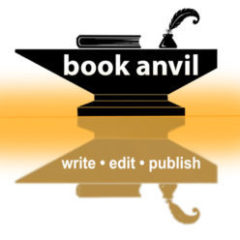There are few better places to start when discussing language and syntax than William Gibson’s first line in Neuromancer:
The sky above the port was the color of television, tuned to a dead channel.
Here the writer uses short, punchy syntax and flat — almost atonal — language. This is cool, deadpan, economical storytelling that tells in one line all you need to know about place, so the author can cut immediately to action. You could easily feel reminded of the way a detective might describe a crime scene.
At first glance there’s a similiar flatness to Angela Carter’s opening line in Heroes and Villains, using the ‘hook’ of contrasted emotional extremes:
Marianne had sharp, cold eyes and she was spiteful but her father loved her.
However the language and syntax swiftly become longer and more complex, with few pauses and strong reliance on metaphor:
Marianne sat at table, eating; she watched dispassionately as the hands of the clock went round but she never felt that time was passing for time was frozen around her in this secluded place where a pastoral quiet possessed everything and the busy clock carved the hours into sculptures of ice.
As you’ve probably realised, the lack of commas or pauses actively embodies the monontony being described. Time is apparently slowed down for the reader, just as it is for the character.
This altered syntax also, as it happens, draws attention to the constructedness of the narrative. For some readers this comes at the expense of immersion. However for Carter’s intended audience, there’s an extra pleasure in unpacking the levels at which the writing works.
While Angela Carter pays lurid attention to the workings of language as such, Gibson, no less aware of meaning, prefers to shock and move on. Rather than using extended description and underpunctuation to make single moments linger for a long time, Gibson delivers information like body blows. Yet in both cases each writer uses language and syntax extremely effectively to deliver setting and mood.
It goes without saying, questions of syntax and language are strongly tethered to audience; you’d hardly employ multisyllabic words and complicated syntax for a young readership. But you can certainly work magic within such boundaries, and it’s always a pleasure for any reader to know the writer has constructed meticulously.
There are many ways to use syntax strategically. For instance, can you deliver a fight scene more powerfully if you use shorter words and cut more swiftly between moments or ideas? Or does such brevity itself become a sort of stylistic cliché?
Perhaps you could render something that happens quickly in a slowed-down, jellified way. What would this say about the situation, the characterisation and the narrative? For instance, it might hint at your character’s extremely methodical, planned way of fighting, in which we have time to see him or her measuring each action and reaction before the next blow. Alternatively, slowed-down description might hint at a character for whom fighting is utterly alien and therefore every moment seems preternaturally heightened.
Whatever you do, varying syntax is as vital to reader engagement as any other single device (even characterisation). If Carter’s underpunctuated floridity continued for page after page, even the most dedicated literary believer would start to drift away. If Gibson never departed from clipped, staccato language in favour of more intricate description he’d have driven readers away too. If you find a scene is flatter than it should be, consider how varying sentence length and structure (e.g. adding or deleting punctuation points) can help increase the writing’s energy.
In the end, writing that ignores the ways syntax and language affect mood, setting and reader engagment might as well be tuned to a ‘dead channel’. But when these devices are used consciously to create an effect — and especially when they draw links to ideas or themes — the writing can live both on and off the page.
